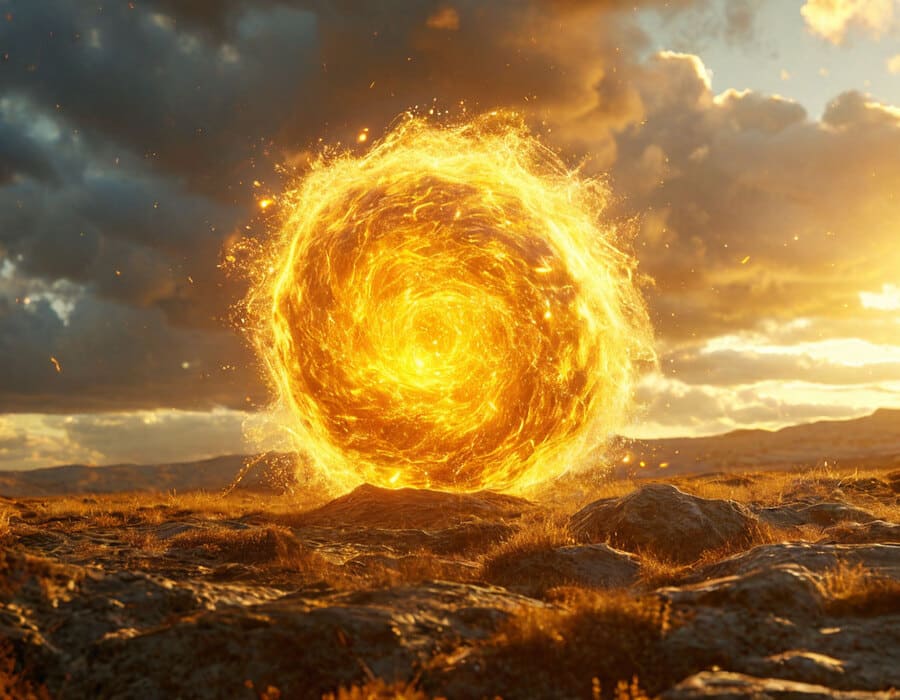When we think of weather, we usually imagine rain, wind, or sunshine. But what about weather in space? Yes, that’s right—space has its own kind of weather, known as space weather, and it can affect us here on Earth in more ways than we might realize. Most of this space weather is caused by the Sun, and when the Sun gets a little too active, it can stir up some serious effects down here. So, how does solar activity impact us on Earth, and why should we care about it?
Understanding solar activity
The Sun is the heart of our solar system, constantly emitting energy and particles into space. These emissions, while mostly harmless, can sometimes intensify, causing space weather events that can have real effects on Earth. The most common forms of solar activity that drive space weather include solar flares, coronal mass ejections (CMEs), and solar winds. Each of these phenomena has the potential to affect our planet’s technology, communications, and even our power supply.
The Earth’s magnetic field: our shield
Thankfully, Earth has its own defense system: the magnetic field. This invisible force acts like a protective shield, deflecting much of the Sun’s harmful radiation and charged particles. However, when the Sun’s activity is particularly strong, it can cause disturbances in this magnetic field, leading to a phenomenon known as a geomagnetic storm.
These storms can have widespread effects, including disruptions in satellite communications, power outages, and even beautiful displays of auroras near the poles. But, more on that later!
Solar flares
One of the most common forms of solar activity is the solar flare. These are sudden and intense bursts of energy from the Sun’s surface, releasing electromagnetic radiation across space. While solar flares don’t pose a direct threat to people on Earth, they can severely impact technology.
When a solar flare hits our atmosphere, it can interfere with radio signals, GPS navigation, and even communication systems. This is especially concerning for airplanes flying over the poles, where disruptions are more intense due to weaker magnetic protection.

Coronal mass ejections (CMEs)
If you thought solar flares were intense, let’s talk about coronal mass ejections (CMEs). These massive eruptions send billions of tons of solar material hurtling through space at high speeds. When CMEs collide with Earth’s magnetic field, they can cause geomagnetic storms that wreak havoc on satellites, power grids, and other systems we rely on daily.
CMEs have the potential to knock out satellite systems, which means everything from TV signals to weather forecasting and GPS can be disrupted. They can also induce electric currents in power grids, leading to widespread outages. One famous example occurred in 1989 when a geomagnetic storm triggered by a CME caused a massive blackout in Quebec, Canada, leaving millions without power.
Solar winds
Solar winds are streams of charged particles that continuously flow from the Sun. Though they’re a constant presence, variations in their intensity can have long-term effects on space exploration and satellite operations.
While not as sudden or destructive as flares or CMEs, solar winds can gradually degrade satellite orbits and expose astronauts to higher levels of radiation. Over time, this can lead to costly maintenance and repairs, as well as increased risks for space travelers.

Auroras: the beautiful side of space weather
Despite the risks, there is a beautiful side to space weather: auroras. These colorful light displays, often seen near the poles, are caused by charged particles from the Sun interacting with Earth’s atmosphere. When solar activity is high, auroras become more vibrant and widespread, sometimes visible much farther from the poles than usual.
While the science behind them is fascinating, auroras are also a visual reminder of just how connected Earth is to space.
Impact on satellites
Space weather can be particularly tough on satellites. These high-tech devices are essential for global communication, weather monitoring, and navigation. When space weather events like CMEs and solar winds occur, satellites are exposed to increased radiation and electrical interference.
In extreme cases, satellites can malfunction or be permanently damaged, leading to service disruptions on Earth. To minimize these risks, satellite operators monitor space weather forecasts and adjust their systems accordingly.
Effects on power grids
One of the most concerning effects of space weather is its impact on power grids. When solar activity induces currents in Earth’s magnetic field, these currents can travel through power lines and transformers, potentially overloading them. This can lead to widespread power outages.
As mentioned earlier, the 1989 Quebec blackout was a direct result of a geomagnetic storm. Today, power companies work closely with space weather forecasters to prepare for potential solar storms and take preventive measures.
Impact on GPS and aviation
Solar activity also affects GPS systems, which many of us rely on daily for navigation. When solar flares or CMEs hit, GPS signals can become distorted, leading to inaccuracies that can affect everything from personal navigation to military operations.
For aviation, solar storms are a serious concern. Planes flying over polar regions are more vulnerable to communication and navigation issues due to weaker magnetic protection. In some cases, flights may be rerouted to avoid these areas during intense solar events.
Astronaut safety
Space weather isn’t just an issue for those of us on Earth—it’s also a big deal for astronauts. Solar radiation from flares and CMEs can pose significant health risks to astronauts in space, especially those on long-term missions or during spacewalks.
To protect astronauts, space agencies closely monitor solar activity and may adjust mission schedules or have astronauts seek shelter in shielded areas of their spacecraft during high-risk periods.
Predicting space weather
Thankfully, we’re getting better at predicting space weather. With advanced technology, scientists can now monitor the Sun’s activity and forecast solar storms. While predictions aren’t perfect, they give us valuable time to prepare for potential disruptions.
Space weather forecasting involves tracking sunspots, which are often precursors to solar flares and CMEs. By understanding the Sun’s 11-year activity cycle, scientists can predict periods of increased solar activity.
Space weather and climate change
A common question is whether space weather affects Earth’s climate. While space weather events like solar flares and CMEs don’t directly impact climate, there’s evidence that long-term changes in solar activity, like the solar cycle, can influence Earth’s temperature and weather patterns.
However, the connection between space weather and climate change is still a topic of ongoing research, and the effects are generally small compared to human-caused climate change.
Protecting Earth from solar activity
As our reliance on technology grows, so does the importance of protecting Earth from solar activity. Governments and space agencies are working together to develop better ways to forecast space weather and mitigate its effects.
From hardening satellites against radiation to upgrading power grid systems, these efforts are crucial for reducing the risks posed by space weather in the future.
Space weather might not seem like something that affects us in our day-to-day lives, but its impact is more significant than most people realize. Solar flares, CMEs, and solar winds can disrupt everything from our power grids to GPS systems, and as we continue to rely on technology, understanding and predicting space weather becomes even more important. The next time you see a beautiful aurora, remember—it’s not just a light show, but a reminder of the Sun’s powerful influence on Earth.













